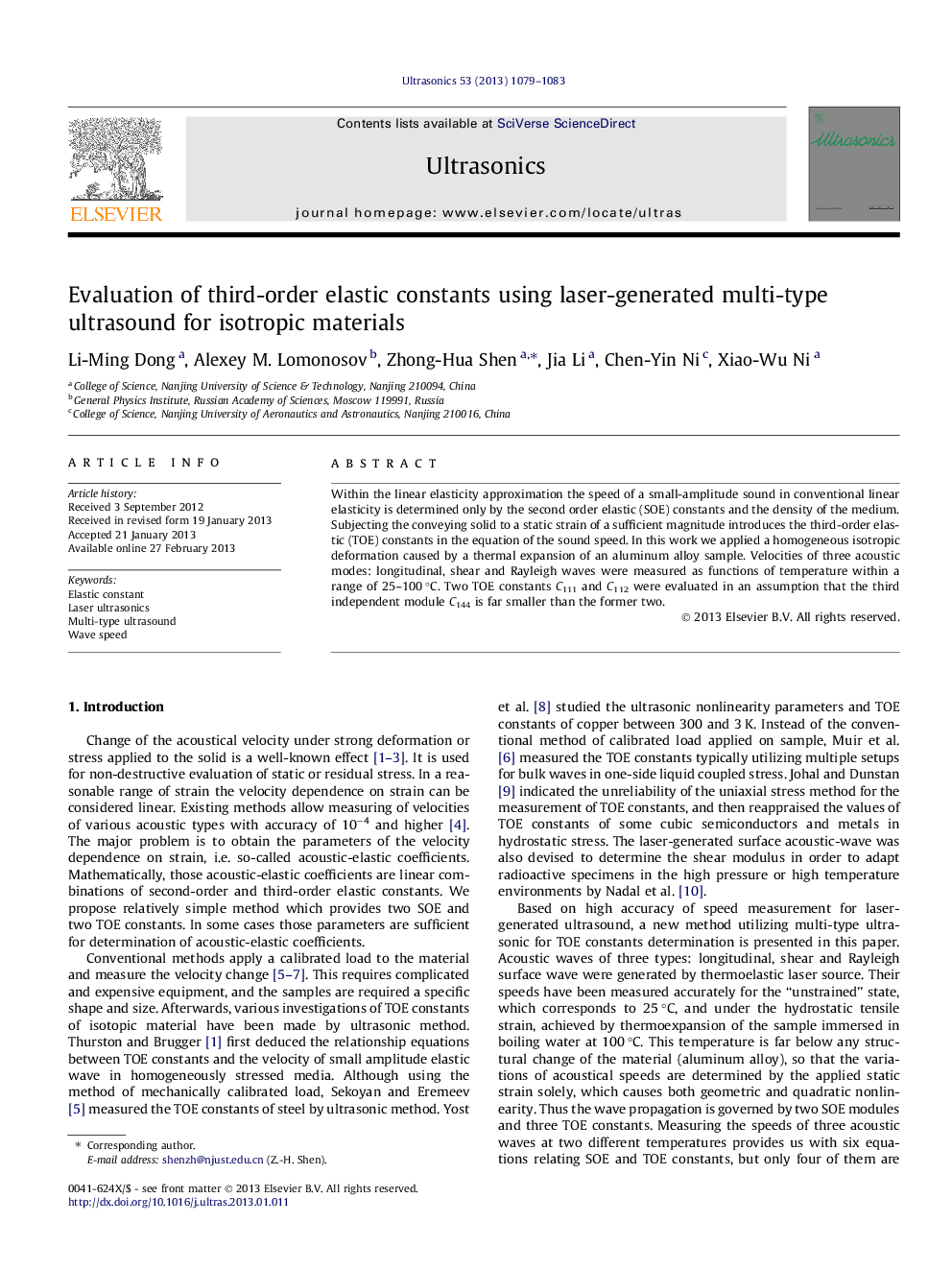| Article ID | Journal | Published Year | Pages | File Type |
|---|---|---|---|---|
| 1758915 | Ultrasonics | 2013 | 5 Pages |
Within the linear elasticity approximation the speed of a small-amplitude sound in conventional linear elasticity is determined only by the second order elastic (SOE) constants and the density of the medium. Subjecting the conveying solid to a static strain of a sufficient magnitude introduces the third-order elastic (TOE) constants in the equation of the sound speed. In this work we applied a homogeneous isotropic deformation caused by a thermal expansion of an aluminum alloy sample. Velocities of three acoustic modes: longitudinal, shear and Rayleigh waves were measured as functions of temperature within a range of 25–100 °C. Two TOE constants C111 and C112 were evaluated in an assumption that the third independent module C144 is far smaller than the former two.
► TOE constants are conveniently evaluated using laser-generated multi-type ultrasound for isotropic materials. ► The relationship between TOECs and velocities of laser-ultrasound is derived under hydrostatic stress. ► Hydrostatic stress method is proposed to evaluate TOECs more accurate than traditional ways. ► System with water bath is set up to measure the ultrasounds velocities accurately under both conditions.
